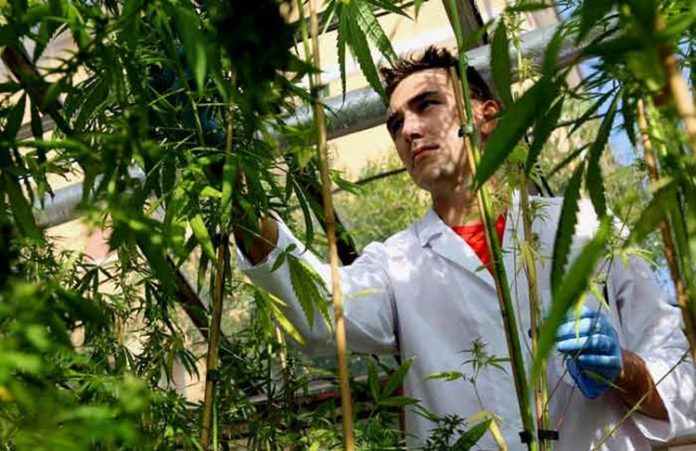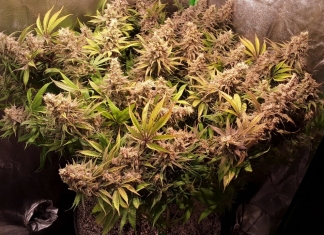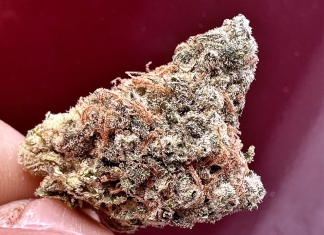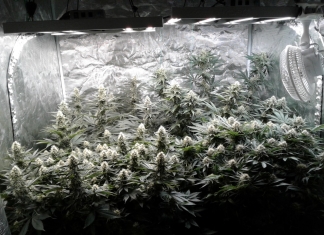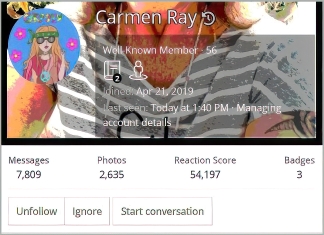Earlier this year, the Drug Enforcement Administration announced it is “streamlining” a research application process for studying Schedule I drugs, including ecstasy and LSD. The news release failed to mention cannabis, which has also been lumped into the classification the federal agency created for substances having “no accepted medical use and a high potential for abuse.”
So what does this mean? In an email, DEA spokesperson Katherine Pfaff tells Rolling Stone that the federal agency “moved their application process to a completely electronic process, eliminating the need to mail in all initial or renewal applications.” In effect, the update means to “help all researchers by improving and expediting the process.” While acting DEA Administrator Robert W. Patterson said in the press release that “research is the bedrock of science,” non-profit organizations and scientists specifically researching cannabis believe the transition from postal mail to email won’t change much for those jumping through statutory and regulatory hoops to study a drug already deemed beneficial for medical purposes by the National Academy of Sciences and in peer-reviewed studies.
During a recent interview, John Hudak, a senior fellow of governance at Brookings Institution, explained to Rolling Stone that, in order for anyone to conduct research on Schedule I drugs, they must acquire a license from the DEA that shows they’re certified to work with such substances. (Over 590 researchers registered with the DEA to study Schedule I substances.) “Bringing this process online is, of course, a positive step, but it’s a very small drop in the bucket and there are so many significant barriers for researchers still,” Hudak says. “It’s equivalent of shortening the Daytona 500 by 10 inches.”
Many non-profit organizations see the DEA’s efforts as falling short of fixing actual problems with cannabis research. National Organization for the Reform of Marijuana Laws (NORML) deputy director Paul Armentano tells Rolling Stone that he “doesn’t foresee the directive from the DEA having any significant impact with regard to the facilitation of clinical trials involving cannabis.”
Today, studies require approval from three federal agencies before moving forward on a clinical trial: the DEA, the Food and Drug Administration, and the National Institute on Drug Abuse, Armentano says. (The overwhelming majority of studies include observational trials – i.e., using subjects who procure their own marijuana – which don’t need federal approval since no administration of cannabis takes place.) And in order for a drug to go to market, there must be at least one randomized, double-blind, placebo-controlled clinical trials – which is not an easy process.
For one, marijuana is subject to its own regulations separate from those governing other Schedule I drugs. While LSD researchers can acquire products from private manufacturers licensed to produce and dispense controlled substances, those studying cannabis can only acquire their products from NIDA and the University of Mississippi, the lone legal marijuana grower and distributor in the U.S. since 1968.
Morgan Fox, communications manager for the Marijuana Policy Project, tells Rolling Stone that researchers have “long been going through the gauntlet” for federal approval. “And those approved to get research products from the fed farm in Mississippi get the lowest quality of marijuana ever seen, and it’s often not usable for research purposes,” Fox says.
What’s wrong with the Ole Miss marijuana? As Armentano sees it, NIDA-sourced cannabis is “often not reflective of cannabis consumed by the general population.” One issue is that the federal THC potency levels have “generally and purposely” been kept artificially low, as compared to products available in domestic markets.
An irony here is that a California-based researcher who wants to study the impacts of cannabis on, say, concentration and cognition, can’t use the medical or recreational marijuana legalized in-state if they want to perform a clinical trial. “If you’re in a state where marijuana is legal and commercially grown under a state license and tested at a state lab, researchers still have to use marijuana from NIDA,” Armentano says. “That is the legal hurdle that exists for cannabis that doesn’t exist for other in substances.”
“Science shouldn’t be shackled by politics,” says Dr. Sue Sisley, a researcher at the California-based Multidisciplinary Association for Psychedelic Studies. It took seven years before the federal government approved Sisley to start the first ever trial of medical marijuana for post-traumatic stress disorder in military veterans. Then last year, after waiting another 20 months to get NIDA-sourced cannabis, she discovered that some samples were contaminated with mold and others didn’t match the potency levels she requested. The study eventually moved forward, but only after the researchers conducted their own testing of the products. “We were the first research team to do secondary testing on the NIDA cannabis because we wanted to ensure it was safe to administer to study subjects,” says Sisley, adding that she’s a lifelong Republican who has been approaching members of Congress about the need for more research options. “It should be politically safe to discuss, but it’s often not.”
For Hudak, he believes regulations covering science need to catch up to domestic markets. “It’s critically important to study marijuana because over 200 million Americans live in states with full-fledge medical marijuana programs,” he says. “The University of Mississippi is trying to keep up, but the private market will always be a step ahead of the government and the lag in the catch-up is profound.”
There’s much blame to go around regarding research roadblocks. A change in DEA rules two years ago sought to allow alternative producers and received at least 25 applications to grow marijuana for research. The DEA needed approval from the Justice Department to get things rolling. But last year, Attorney General Jeff Sessions, a longtime vocal opponent of marijuana, shut down any movement.
While some research advocates continue to point fingers at Sessions, others don’t buy the notion of a DEA v. DOJ standoff. “The DEA has tried to shift the blame to Sessions, but the DEA is the agency that sets the quota for how much marijuana is grown in this country and signs off on licensing for researchers,” Armentano says. “Now the DEA wants to say they’re open to research? That sounds disingenuous as hell to me.”
At the end of the day, most know that “Sessions does not like marijuana and doesn’t want to do anything to forward progress,” Fox says. But many have lost faith in the DEA’s efforts to ease cannabis research even though “there’s “a lot of people in government agencies that see the ridiculousness of restricting research options and see a need for small scale changes that could have large scale impacts,” Hudak says.
Is there any room for optimism? “I have heard lip service from every agency and every politician you can imagine and there’s no political interest to change,” Armentano says. “Yes, there’s perfunctory Congressional bills, but the bills are so convoluted.” One way of getting around the NIDA-sourced cannabis is importing legal, standardized cannabis from Canada, which permits legal exports to countries such as Australia, Germany and New Zealand – but that’s not likely. “Consider importing from Canada,” says Armentano. “It’s legal and allows exportation of cannabis. The DEA can sign off on an import license. But the ultimate problem is science and research don’t drive the narrative in the U.S. and it’s so far out of the government’s comfort zone” that it probably would never happen.
Still, researchers continue to fight inside the box of federal restrictions. “It’s important to remember that researchers across the country here are still willing to go through the hoops and use NIDA marijuana for clinical trials,” Armentano says.


